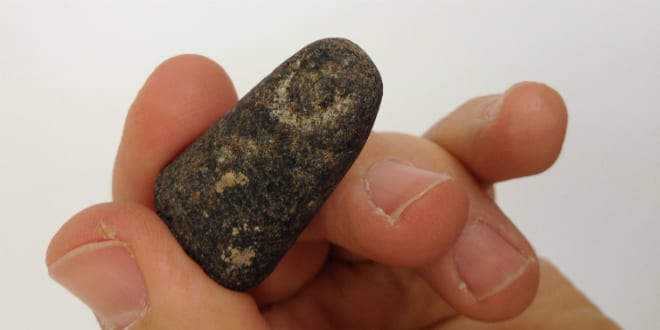On the eve of the holiday of Passover, Israeli archaeologists discovered a fragment of a finger in the City of David made of dark stone from an imported Egyptian statue believed to date back approximately 3,500 years.

According to Temple Mount Sifting Project Director Dr. Gabriel Barkay, the 3.5-centimeter-long fragment represents a human little-finger as can be seen from the fingernail designed on the topside of the fragment. The sculpture is made of hard black stone composed of schist and gneiss rocks, which were the stones most commonly used by sculptors in ancient Egypt. Barkay surmises that since the underside of the finger was flattened, the hand it belonged to was positioned along another object or along the body represented by the statue, apparently an image of a god or a king.
Dr. Barkay said that the fragment of the statue may be representative of Egyptian art from the Late Bronze Age.
The Land of Israel was controlled by the ancient Egyptians during the era known as the New Kingdom of Egypt (1575–1087 BCE.). Jerusalem was known at the time as a semi-independent city in the Egyptian province of Canaan, controlled by Egypt through a series of local rulers.
The fragment joins other important evidence found of the Egyptian presence in Jerusalem during the Late Bronze Age, such as an ostensibly broken shoulder from a statue of a human figure, scarab amulets, seals, and Egyptian-style jewelry.
In addition, a 3,500-year-old hieroglyphic fragment was recently found in the collections of the École Biblique, which are part of the St. Etienne French Dominican monastery, located north of the Old City. These findings may indicate the existence of an Egyptian temple in Jerusalem in the area of the monastery near the Damascus Gate, dating approximately back to the 13th century BCE.
The Temple Mount Sifting Project was founded in 2004 by Dr. Gabriel Barkay and Zachi Dvira under the auspices of Bar-Ilan University in response to the illegal removal by the Islamic Waqf of tons of earth filled with antiquities from the Temple Mount in 1999. Since then, volunteer and professional sifters have unearthed thousands of artifacts, including more than 600 colored stone floor tile segments, more than 100 of which have been conclusively dated to the Second Temple period. The finger fragment represents another of the significant finds discovered by the Temple Mount Sifting Project that help piece together the history of ancient Jerusalem.




